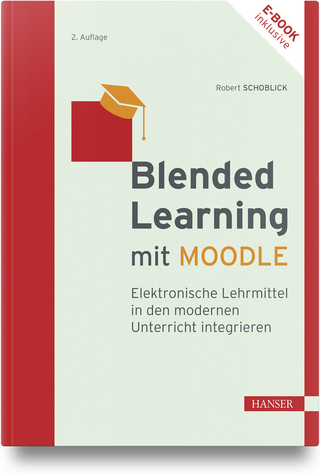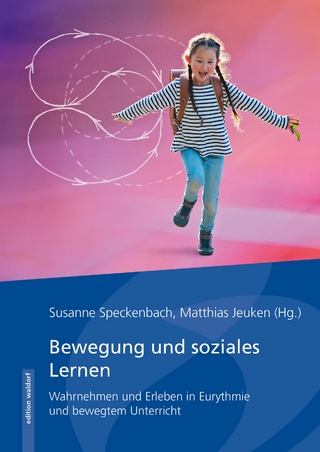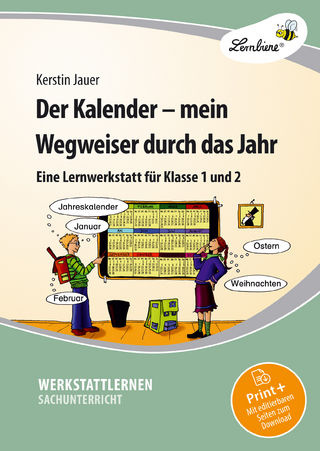
Bringing the Neuroscience of Learning to Online Teaching
Teachers' College Press (Verlag)
978-0-8077-6553-1 (ISBN)
- Titel z.Zt. nicht lieferbar
- Versandkostenfrei innerhalb Deutschlands
- Auch auf Rechnung
- Verfügbarkeit in der Filiale vor Ort prüfen
- Artikel merken
This practical resource draws on the best of neuroscience to inform decisionmaking about digital learning. We live in unprecedented times that have pushed schools to make many decisions that have been postponed for years. For the first time since the inception of public education, teachers have been invited to redesign the learning landscape by integrating an intelligent selection of digital educational resources and changing pedagogical approaches based on information from the learning sciences. This handbook will help teachers make the most of this opportunity by showing them how to use digital tools to differentiate learning, employ alternative options to standardized testing, personalize learning, prioritize social-emotional skills, and inspire students to think more critically. The author identifies gems in quality teaching that coincide with how the brain learns best and are amplified in online contexts, including 40 evidenced-informed pedagogies. This book will help all educators move online teaching and learning to new levels of confidence and success.
Book Features:
Provides quick references to key planning tools like decision-trees, graphics, app recommendations, and step-by-step directions to help teachers create their own online learning courses.
Guides teachers through a 12-step model for instructional design that meets both national and international standards.
Shows educators how to use an all-new Digital Resource Taxonomy to select resources, and how to research and keep them up to date.
Explains why good instructional design and educational technology are complementary with best practices in learning sciences like Mind, Brain, and Education Science.
Shares ways teachers can leverage technology to create more time for the personalized aspects of learning.
Shows educators how to design online courses with tools that let all students begin at their own starting points and how to differentiate homework.
Offers evidence-informed pedagogies to make online intimate and authentic for students.
Tracey Tokuhama-Espinosa is an instructor at the Harvard University Extension School in a course called the “Neuroscience of Learning: An Introduction to Mind, Brain, Health and Education”, a 100% online, flipped course with a synchronous meeting time. She taught kindergarten–university and is the associate editor of Nature Partner Journal Science of Learning, and an author and international educational consultant. She is the author of the Teachers College Press classic The New Science of Teaching and Learning: Using the Best of Mind, Brain, and Education Science in the Classroom.
Contents (Tentative)
Foreword
Preface
Who Should Read This Book
How to Use This Book
Acknowledgments
Introduction
The Move
Never a Better Time to Be An Educator
Technology and Mind, Brain, and Education
1. Teaching Online Using Mind, Brain, and Education Science
The New First Steps in Teachers’ Professional Development
Online Design Using Mind, Brain, and Education Teaching
Conditions and Pedagogies for Great Learning
2. Connecting Online and Face-to-Face Learning Goals to Neuroscience
Mastery Learning
Deeper Learning
Metacognitive Awareness
Growth Mindsets
Dare To Err
Optimal Performance
Relevant Curriculum
Differentiation and Student Autonomy
Social Contagion
Strong Learning Community
Personalization
Communication
3. The Plan: Choices, the Brain, and Backwards Design
Worked Examples
Understanding By Design
Activities and Resources
An All-You-Can-Eat Buffet of Digital Technology: Choose Wisely
4. Time: Synchronous and Asynchronous Possibilities
Time for School: The Academic Calendar
Time for Learning: Synchronous vs. Asynchronous Activities
Time for Asynchronous and Synchronous Learning
Time for Communication
Time for Evaluation
5. Instructional Design: Twelve Steps to a Great Online Course
Guidelines from State, National and International Standards
The 12-Step Process
Pros and Cons of this Instructional Design
6. The Celebration: Enjoy Our New Online Home
There’s Never Been a Better Time to Be An Educator
References
Index
About the Author
| Erscheinungsdatum | 01.09.2021 |
|---|---|
| Vorwort | Michael Fullan |
| Verlagsort | New York |
| Sprache | englisch |
| Maße | 222 x 286 mm |
| Gewicht | 254 g |
| Themenwelt | Schulbuch / Wörterbuch ► Unterrichtsvorbereitung ► Unterrichts-Handreichungen |
| Sozialwissenschaften ► Pädagogik ► Erwachsenenbildung | |
| ISBN-10 | 0-8077-6553-8 / 0807765538 |
| ISBN-13 | 978-0-8077-6553-1 / 9780807765531 |
| Zustand | Neuware |
| Informationen gemäß Produktsicherheitsverordnung (GPSR) | |
| Haben Sie eine Frage zum Produkt? |
aus dem Bereich


